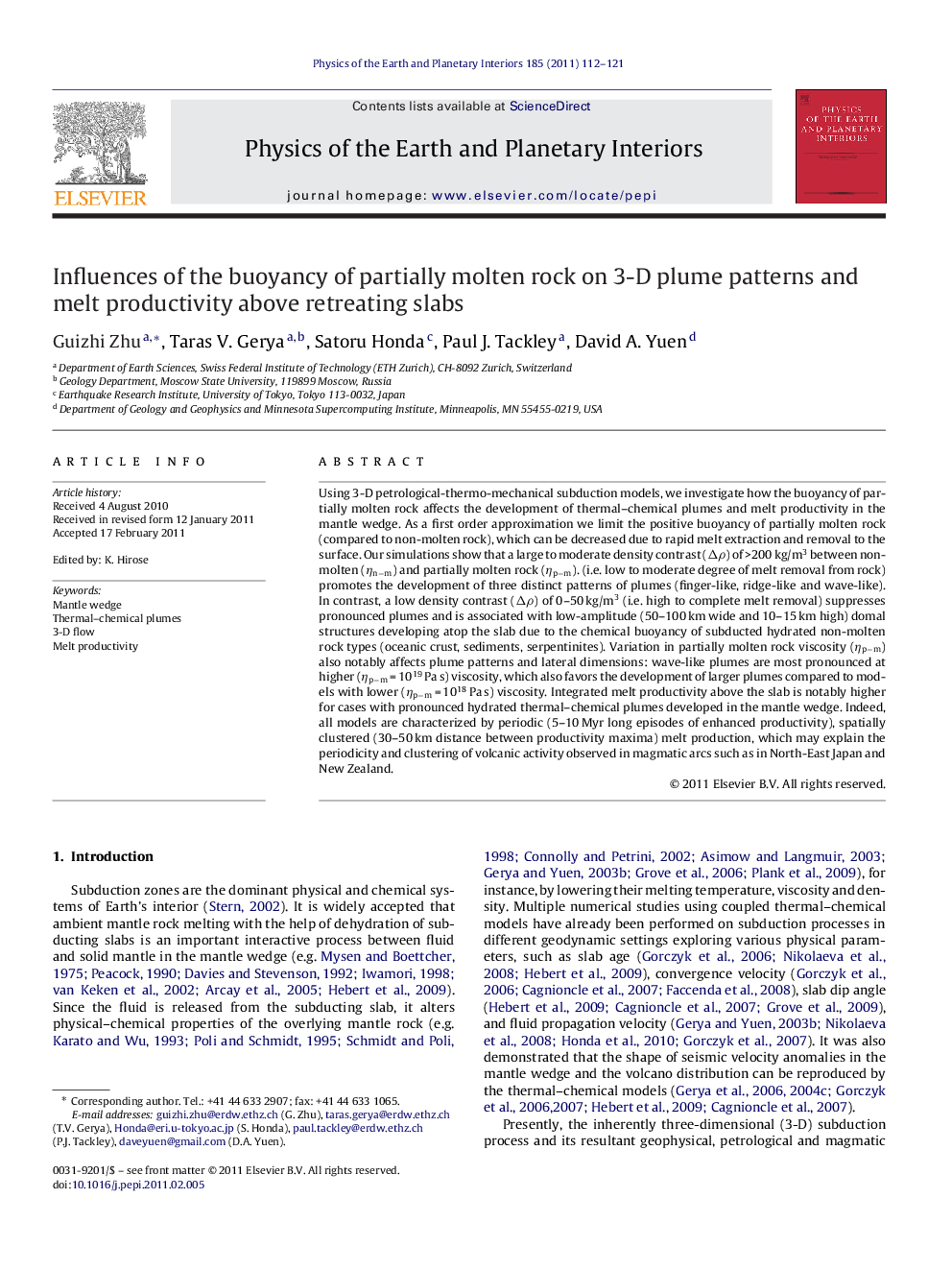| کد مقاله | کد نشریه | سال انتشار | مقاله انگلیسی | نسخه تمام متن |
|---|---|---|---|---|
| 4741947 | 1641548 | 2011 | 10 صفحه PDF | دانلود رایگان |

Using 3-D petrological-thermo-mechanical subduction models, we investigate how the buoyancy of partially molten rock affects the development of thermal–chemical plumes and melt productivity in the mantle wedge. As a first order approximation we limit the positive buoyancy of partially molten rock (compared to non-molten rock), which can be decreased due to rapid melt extraction and removal to the surface. Our simulations show that a large to moderate density contrast (Δρ) of >200 kg/m3 between non-molten (ηn−m) and partially molten rock (ηp−m). (i.e. low to moderate degree of melt removal from rock) promotes the development of three distinct patterns of plumes (finger-like, ridge-like and wave-like). In contrast, a low density contrast (Δρ) of 0–50 kg/m3 (i.e. high to complete melt removal) suppresses pronounced plumes and is associated with low-amplitude (50–100 km wide and 10–15 km high) domal structures developing atop the slab due to the chemical buoyancy of subducted hydrated non-molten rock types (oceanic crust, sediments, serpentinites). Variation in partially molten rock viscosity (ηp−m) also notably affects plume patterns and lateral dimensions: wave-like plumes are most pronounced at higher (ηp−m = 1019 Pa s) viscosity, which also favors the development of larger plumes compared to models with lower (ηp−m = 1018 Pa s) viscosity. Integrated melt productivity above the slab is notably higher for cases with pronounced hydrated thermal–chemical plumes developed in the mantle wedge. Indeed, all models are characterized by periodic (5–10 Myr long episodes of enhanced productivity), spatially clustered (30–50 km distance between productivity maxima) melt production, which may explain the periodicity and clustering of volcanic activity observed in magmatic arcs such as in North-East Japan and New Zealand.
► We investigate how the buoyancy of partially molten rock affects the development of thermal–chemical plumes and melt productivity in the mantle wedge in 3-D by using a simplified cutoff approach for the density contrast between non-molten and partially molten rock.
► The three patterns of thermal–chemical plumes (finger-like, ridge-like and wave-like) found in our previous paper (Zhu et al., 2009) are only stable in experiments with the density contrast between non-molten and partially molten rock is bigger than 200 kg/m3.
► The density contrast between non-molten and partially molten rock mainly affects the magnitude of melt productivity.
Journal: Physics of the Earth and Planetary Interiors - Volume 185, Issues 3–4, April 2011, Pages 112–121